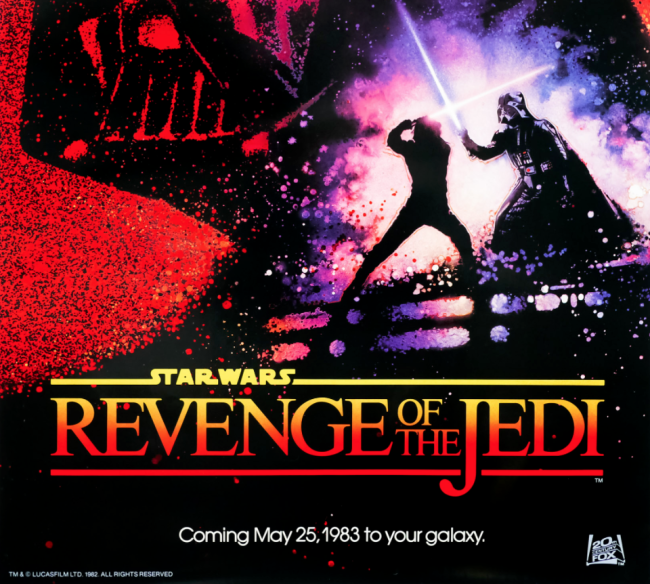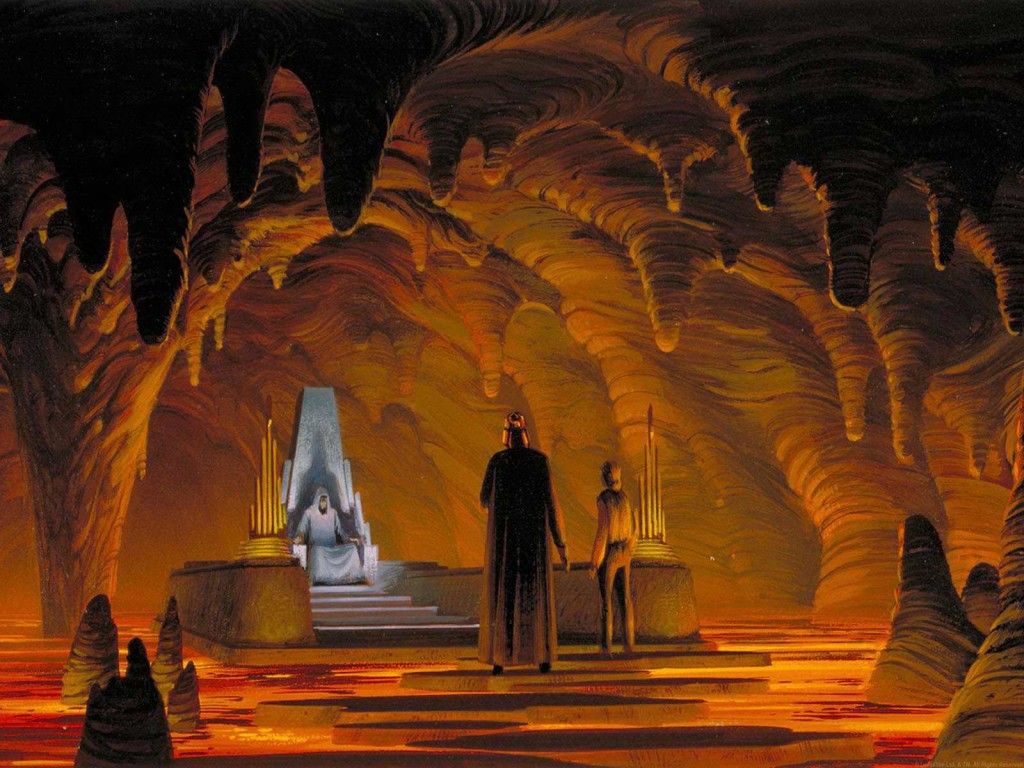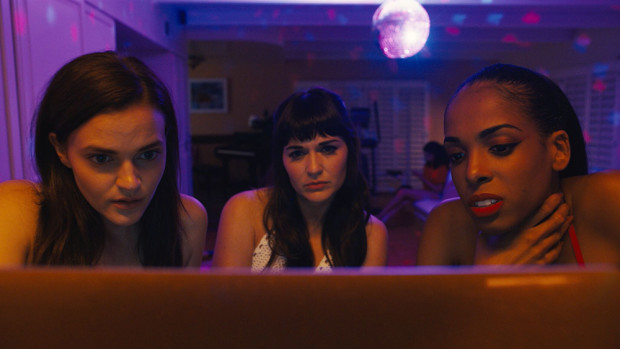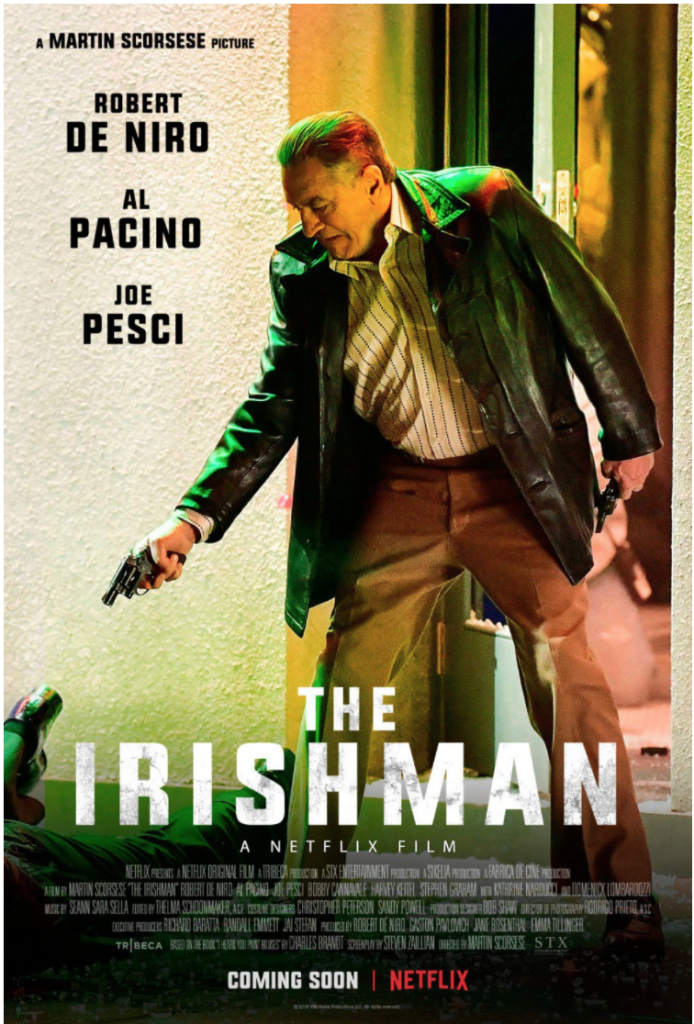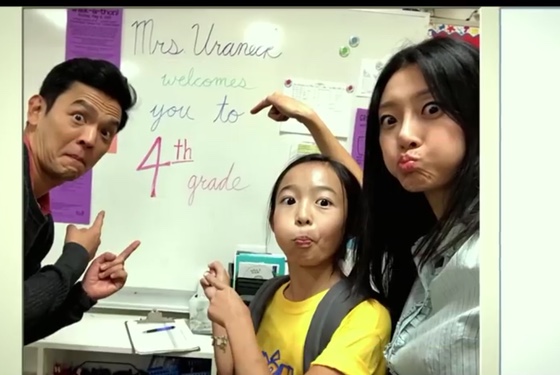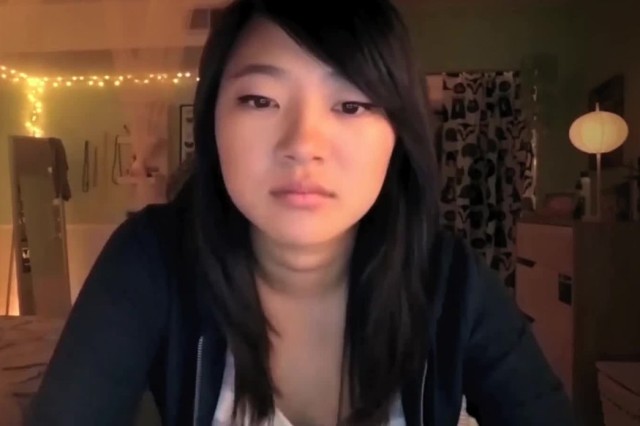Genre: Family/Holiday
Premise: (from Black List) A young girl partners up with an elf, a Russian explorer and a reindeer to rescue Santa Claus from a band of evil elves and save the North Pole.
About: Today’s script finished on last year’s Black List with 10 votes. The writers, Paul Laudieo and Ben Baker, are both new to the game. This is their breakthrough script.
Writer: Paul Laudieo & Ben Baker
Details: 112 pages
Today’s review comes with a reminder. Thursday, December 14th, is the last day to send in your script for the FINAL AMATEUR OFFERINGS COMPETITION of the year, which is for holiday-themed scripts only. So if you have a script about Christmas, Hanukkah, Festivus, or even that long awaited Alastair Sim biopic (we’ll see how many of you get that reference), send it to carsonreeves3@gmail.com with the title, genre, logline, and why you think it should be featured on the site.
The good news is that Netflix has embarked on being the home of everything Christmas. Their “Christmas Chronicles” movie, starring Kurt Russell, has been viewed over 20 million times! And it’s still 3 weeks til Christmas! So there’s a real shot that if you write a great Christmas script, good things will come of it. Today’s Christmas adventure was featured on last year’s Black List. Let’s check it out!
13 year old perennial good girl Sophia is headed to her grandmother’s house for Christmas with her family. While Sophia loves her four siblings, she’s sick of them being so selfish all the time. So when the family finally gets to Grandma’s and her older sister, Caitlin, starts being a bitch, Sophia screams at and throws a plate at her, which leads to her getting punished.
Later that night, while stewing in her room, Sophia notices an elaborate sleigh landing on the roof! Oh my. Is that… Santa Claus?? Sophia runs outside to see that it is not Santa, but rather someone named Bucklebee the Elf. Bucklebee makes Sophia an offer she can’t refuse. Come to the North Pole and party her ass off. Since that sounds better than hanging with her annoying family, Sophia walks into the sleigh carriage, which has a giant endless carnival inside!
Sophia begins to enjoy the festivities until she notices a kid hiding from everyone. She runs after him and he tells her that Bucklebee is evil! He’s an elf who’s taken over the North Pole and loves to sing mean variations of holiday classics (“I see you when you’re sleeping! And I know when you’re awake! I know that you’ve been bad, not good! So give in and accept your fate!”). And one of his favorite things to do is kidnap the “naughty” kids every year. Heeding his warning, Sophia is able to escape the sleigh, jumping out onto a snowy mountain.
It’s here where she runs into Juniper, an elf who escaped the Rebellion, Cosmo, a baby reindeer, and Georgy, a Russian man who’s been wandering around these parts for years in search of the Abominable Snowman. When Sophia informs them she heard that the exiled Santa Claus is somewhere in the Yulewood Forest, they reluctantly agree to help her look for him. Unfortunately, Bucklebee and his army of oversized crows are hot on their tail, determined to prevent Santa Claus from returning at all costs!
When it comes to kids movies, there’s this odd glitch in the success matrix that seems to favor darkness. Think about the most famous kids movies. The Wizard of Oz. Willy Wonka. The Lion King. The Nightmare Before Christmas. These films get really dark! I don’t know why this is because, on the surface, you’d think anything for kids should be straight-up fun and happy. But the proof is in the pudding. In the movies I listed above, there’s death and moody songs and intense villains and uncomfortable weirdness. I mean, who the hell came up with flying monkeys? Or a girl who turns into a giant blueberry and disappears?
Escape From The North Pole sticks to that tradition. Bucklebee is both evil and freaky. But it’s not just him. There’s a warped sense of hopelessness that permeates the story. Santa is gone. Kids get kidnapped into a flying carnival of hell where they’re all drugged to prepare them for slavery. And some of the biggest set pieces are really sad. Like the Cave of Lost Toys – an entire world of toys living underneath a cave because they weren’t deemed fun enough to play with. Yeah, right?! This is some dark shit!
But what Laudieo and Baker get right is that they build a central group of characters to contrast against that. Our heroes are actually fun. Sophia is delightfully earnest. Georgy’s a big goofball. Juniper doesn’t have a mean bone in his body. And who doesn’t love baby reindeer who haven’t yet learned how to fly? These four are the beacon of light that keep us headed for land.
Yet Laudieo and Baker run into a screenwriting problem I see often. They cheat on the hero’s character flaw. You can’t do this because the hero overcoming their flaw is the emotional anchor to the story. When you get it right, it’s the thing that makes the audience feel all warm and fuzzy inside. Get it wrong and the movie can still be good. But it’s not MEMORABLE to the audience because they don’t associate any FEELINGS with it.
Let me explain in more detail. This whole premise is based around Sophia getting on the naughty list. That’s why she’s picked up by Bucklebee. However, Sophia isn’t naughty. The entire opening of the movie establishes that it’s everyone else in the family who’s naughty. She’s the lone good one. But if she’s good, Bucklebee won’t want her. So the writers have to construct this moment where Sophia loses her cool and throws a plate at her sister. And that’s what gets her on the list.
The reason this is a problem is because Sophia doesn’t have a true character flaw to overcome. She doesn’t have to learn to be “nice” or “unselfish” because she’s already nice and unselfish. By cheating to get her on this trip, you’ve given us a character who can’t be arced. The writers would’ve been better off making Sophia legitimately selfish or “naughty.” That way, we can use the adventure to teach her a lesson and arc her. The problem is that every writer’s terrified of making their hero mean because all the screenwriting books tell them the hero has to be “likable.” But if a character doesn’t have any flaws, then there’s no reason to send them on an adventure. The whole point of going on any adventure, even in real life, is to test and learn something about yourself.
While some writers rebel against the notion of character arcs in movies because that stuff never happens in “real life” (or at least, that’s the argument), family films are one of the genres where you have to do it. If there was ever a genre built for arcing characters, it’s this one. Your main audience is in the process of learning what’s right and wrong in life. Your responsibility as a writer is to show them.
But that doesn’t mean Escape From The North Pole was bad. I found it to be imaginative (I loved stepping into the carriage and it being a million times bigger inside than out), and brave (the darkness gave the story an edge that struck a nice balance between sophisticated and childlike). I just wish more had been done with the characters. That’s where the real magic happens in these movies. And it could’ve elevated Escape From the North Pole into something truly memorable.
[ ] What the hell did I just read?
[ ] wasn’t for me
[x] worth the read
[ ] impressive
[ ] genius
What I learned: I wouldn’t recommend writing something like this. It’s so hard to get a 150 million dollar non-IP film made. Christmas movies like The Christmas Chronicles and Elf can both be made for under 30 million bucks. So if you have a choice, write one of those over the much more expensive Escape From The North Pole. That is NOT to say it’s impossible to get this movie made. Only that when a script comes along with this big of a budget, you’re eliminating 90% of the buyers in town.
We may not have a new Star Wars movie this Christmas season. But we have a Star Wars script review! It’s time to go back to that brief period in history when Jedis enacted revenge!!!
Genre: Sci-Fi/Fantasy
Premise: The rebels must destroy a series of Death Stars that are being manufactured outside the Imperial capital planet of Had Abaddon.
About: This is an early draft of Star Wars Episode 6. While it’s technically 82 pages long, that’s only because it was re-typed into a digital document. Since whoever transcribed it didn’t know everything about screenplay format, or Final Draft, the formatting is quite sloppy, particularly on the dialogue side, where the margins are way wider than normal. I would estimate the “true” page count for this script is somewhere around 115 pages.
Writer: George Lucas
Details: June 1981 “Revised Rough Draft”
I vaguely remember hearing, as a kid, that the original title for the final Star Wars movie was going to be, “Revenge of the Jedi.” Something about that title promised the greatest moviegoing experience that I was ever going to have. It was such an in-your-face title that hinted at seeing Luke Skywalker as you’ve never seen him before. So when the title was later changed to, “Return of the Jedi,” and the excuse was that Jedis don’t enact revenge, I was kinda bummed. I mean, sure, it made sense when they explained it. But “Revenge of the Jedi” sounded so much cooler.
It speaks volumes to the problem of over-thinking writers have. We can overthink ourselves into anything. Sure, “revenge” may not be part of the Jedi code, but that’s exactly why it was so exciting. A Jedi doing something he wasn’t supposed to be doing? Count me in! Nobody wants to see a movie where someone does exactly what they’re supposed to do. That’s boring. They want to see a movie where a character does what they’re not supposed to do. That’s not to say the final result here wasn’t great. Only that, one day, I want to see a movie about a Jedi revenge.
Oh, speaking of the final result, George Lucas went full-bonkers for his climactic Jedi battle in this one. Much different from what we saw in the final film. Read on to find out what happened!
“The Rebellion is doomed. Spies loyal to the Old Republic have reported several new armored space stations under construction by the Empire.” This is the first paragraph of the opening crawl, which follows that up by introducing us to the planet, Had Abaddon, the “dreaded” Imperial capitol.
It turns out that in this version of “Jedi,” the Empire wasn’t just doubling down on their Death Stars, they were mass-producing them! Well, maybe not mass-producing. But they’re building multiple Death Stars. Which is where we meet Leia, guiding a rebel pilot in a stolen Tie-fighter towards a nearby sanctuary moon, so they can begin their plan of shutting down the moon’s shield generator, which is protecting Had Abaddon.
Meanwhile, on Tatooine, Luke, Threepio, R2, Chewie, and Lando, are hiding out in a Jawa Inn, where they’re plotting their rescue of Han at Jabba’s palace. Everyone thinks Luke is a little too confident, but go along with the plan anyway. Strangely, in this version, Han is not frozen in carbonite. Once he was sent to Jabba, he was un-frozen and simply kept prisoner. Odd, I know.
The assault on Jabba’s palace is janky only because Lucas had not yet figured out that he should put Leia on the team. As you know, in the finished film, Leia is a pivotal component to saving Han. But here, she’s in charge of the Had Abaddon plan, and therefore can’t be there. One of the stranger moments in the script is that, after Luke escapes the Rancor, Han is thrown into the prison cell with the others. He didn’t even need to be saved. There’s a possibility that Lucas hadn’t nailed down the specifics of the Han rescue yet and was simply creating a placeholder sequence.
Back on Abaddon, Vader and the Emperor aren’t speaking. In fact, Emperor only speaks to Vader through the new Grand Moff JerJerrod, a pompous mothereffer who treats Vader like the dirt underneath his shoes. Vader is determined to find and train Luke, but the Emperor has other plans. He secretly tells Grand Moff JerJerrod to find Luke and bring him to him. JerJerrod is all too happy to oblige, and when Luke and the crew get to the Tatooine space port, he’s lured into a back alley and taken by JerJerrod’s men.
Leia finally gets to the sanctuary moon, where I was disappointed to learn that the Ewok sequence was the same as it is in the finished film, the only difference being that it’s Leia and a bunch of nobodies fighting the biker scouts this time. I’d heard all these stories about how the original plan was to set this sequence on the wookie planet. But I guess it had already been decided it was Ewoks. Oh well. I still have The Star Wars Christmas Special.
Somehow, Lucas is able to get Han, Chewie and the droids to the sanctuary planet, where they team up with Leia (and yes, we still have the “Threepio is a deity” sequence). But the real fun is the Emperor/Luke/Vader battle, and that’s because two additional characters are involved. That would be Obi-Wan and Yoda! Yes. So while Luke is fighting Vader, Obi-Wan is occasionally getting between them, using the “netherworld” powers to protect Luke. At one point, the Emperor shoots lightning at Luke, only for Obi-Wan to get in the way and use the force to create a shield. And when his shield starts to weaken, we see a second shield. And it’s Yoda, standing in front of him, doing his best to protect Luke as well. It’s pretty badass.
But gone is all the father-son stuff. And, of course, that’s what made the fight in the movie so emotional and affecting. It’s actually a great lesson for action screenwriters. The tendency is always to start with “cool” and “badass” shit. But what’s really going to land with the audience is emotion. So go ahead and get creative with your big set pieces. But note, especially when it comes to the climax of your movie, that it’s going to feel empty unless you anchor it in some kind of emotional catharsis.
Oh, but Lucas didn’t stop there. Yoda COMES BACK FROM THE DEAD! Yeah. He ends up saving Vader from going into Force Hell or something. And, as a reward, he’s brought back to life. I know. Crazy, right? Rian Johnson would’ve loved to film that scene.
This was really fun to read because it shows just how much of a process writing a script is. For example, it makes total sense to keep Leia at Abaddon. She’s the rebel commander. You need a main character to take care of this stuff. However, you don’t want one of your main characters away from your other main characters, especially her love interest, for 70% of the movie. Not only that, but it’s for the very reason that Leia is a high-class commander of the rebellion, that it’s so cool that she gets down and dirty to save Han at Jabba’s palace.
Another thing you see the value of when reading early drafts is how unnecessary character prep is. It’s preferable to just throw your characters into the plot. I made this same point with the original Star Wars script. We don’t get four scenes of Darth Vader talking about how he needs to stop the Rebel ship. We meet him AS HE’S STOPPING THE REBEL SHIP.
Likewise, here, there’s this whole scene at a Jawa Inn where Luke and the rest of the crew are prepping to save Han. It’s a boring scene. Characters are standing around (never a good thing in an action movie). In the final movie, we meet Luke AS HE SHOWS UP TO SAVE HAN. We meet him in media res. And you see that all over this script. There’s a lot of “before” stuff. Whereas in the final film, it’s all “during” stuff.
That was a huge problem with the prequels. There are way too many scenes “before” the scenes that matter. It makes me think that Lucas just filmed the equivalent of whatever this draft was for his prequel movies, instead of continuing to improve them and get the stories to a place where the plot was charging forward in every scene.
Another problem with this draft is GRAND MOFF JERJERROD. Full-disclosure. I love Grand Moff Jerjerrod. I still don’t know what a Grand Moff is. I don’t even know what a Moff is. But I wanted my own Grand Moff JerJerrod toy within a second of meeting him. With that said, creating an intermediary between the Emperor and Vader made JerJerrod the active one and, in the process, Vader the passive one. Vader basically just sits around and waits while JerJerrod gets to do the fun stuff like kidnap Luke.
By eliminating this character for the final film, it made Vader and the Emperor have to work together. And this is how you want it. You want your big boys interacting with one another. You don’t want bottom of the toy shelf characters getting to do all the fun stuff. This is another great screenwriting lesson. Sometimes you have to eliminate characters you like for the greater good of the story. I liked JerJerrod. But he was in the way of the more interesting storyline that occurs between Vader and the Emperor.
Another thing Lucas clearly had no idea what to do with was the Death Stars. Unlike a lot of people, I love Death Stars. I want to see as many of them as possible. So when I found out the Emperor was mass-producing them, I had a Stargasm. The problem was that you had three entities. You had Had Abaddon, which was the capital of the Empire. You had the sanctuary moon. And then you had the Death Stars. It’s unnecessarily complicated.
What do I tell 90% of the writers who come to me for notes? SIMPLIFY. The answer is almost always to simplify. And you see that’s what they did here. They got rid of Had Abaddon. They got rid of multiple Death Stars. And the reason that was so key is that it allowed them to put the Emperor on the Death Star, making him much more vulnerable. Everything became streamlined once they consolidated all of those things.
Sadly, I didn’t get any revenging. I really wanted some Jedi revenge. I suppose the good news is the emergence of Star Wars TV. Maybe one of these days, I’ll yet get my revenge.
[ ] What the hell did I just read?
[ ] wasn’t for me
[x] worth the read
[ ] impressive
[ ] genius
What I learned: Place your character in situations that contrast with who they are. Leia is a high-level commander. So it’s cool to see her in an underground cess pool of scum and villainy trying to save her boyfriend. Likewise, a homeless person is going to be more interesting if he’s placed inside of a black-tie fund raiser. Put your characters in locations they’re out of place in and watch great scenes write themselves.
Is Netflix going to be around in five years? SNL just made fun of them this weekend for making way too much content (I like the bit about the show that only has one known viewer – “Kennymeade Depot” – and how the title actually sounds like one of those real Netflix shows you never watch). However, there’s a very specific reason why they’re doing this. Netflix was built on a foundation of renting out OTHER PEOPLES’ content. Over 80% of their content is not theirs. Imagine if that all disappeared one day? If the studios ever found their balls, they could do that. And then Netflix would only have Netflix content. And what is Netflix content? It’s a bunch of garbage movies with a few good TV shows. That’s why they’re creating content at a breakneck pace. They’re doing the streaming version of “prepping.” They need to have something to scroll through once the Disney streaming armageddon debuts in 9 months. With Warner Brothers not far behind.
Ironically, I’ve seen some pretty cool stuff on Netflix these last couple of weeks. Ballad of Buster Scruggs, which I reviewed last week, was amazing. I also saw this movie, “Cam,” about a webcam girl who starts seeing her doppelgänger on a cam feed. The doppelgänger conceit always starts strong and ends weak, as writers struggle to explain what’s going on (they never know and are therefore writing themselves out of a corner the entire third act). Cam runs into some similar problems, but it manages to keep the tension throughout. I was pleasantly surprised. I also saw the first episode of Bodyguard, about a war vet tasked to protect a political figure whose views he doesn’t believe in. The first episode was awesome. It’s also a great reminder to start your script with a scene that makes it impossible for the reader to put it down. I always tell you guys that and get asked, “What do you mean?” This scene is what I mean. Check it out and you’ll understand where the bar is.
But yeah, Disney’s IP is terrifying. They’ve got Star Wars, Marvel, and 80 years of animation movies to make, re-make, reboot, and build off of. Netflix’s IP is… Bright? I guess Stranger Things as well. I’m not sure if Stranger Things is scaleable though. Netflix does have some interesting projects in development such as The Umbrella Company, The Magic Order (Mark Millar), Ratched (prequel to Cuckoo’s Nest), Locke and Key, The Dark Crystal, and the biggest project of all, The Irishman (which, in the process of de-aging its stars for the flashback scenes, seems keen on testing just how limitless that Netflix bank account is). What do you guys think? Will Netflix survive the next stage of streaming wars? I honestly don’t know.
As for the real world of movies, I’m only looking forward to one film in the final month of 2018, and that would be Spiderman: Into the Spiderverse. Not only because I heard it was great. But should this movie do well, it will be another major strike against Lucasfilm head, Kathleen Kennedy, since the writers of the film, Phil Lord and Chris Miller, are the directors she fired off Solo. And if they can make a premise as wacky as this work, their version of Solo, no matter how weird, was likely a thousand times better than middle-of-the-road Ron Howard’s version.
While I’m not exactly jonzeing to see Aquaman, I’m hoping to be surprised. James Wan has a special talent for elevating material that you wouldn’t suspect would be any good. And the movie does look fun. I’m afraid Bumblebee’s going to get lost in the holiday jumble for me and I’ll be waiting for digital. I don’t know what to make of Mary Poppins Returns. I love Emily Blunt but this one may be skewing too young for me. Oh, I almost forgot. There’s one more movie coming out on Netflix December 14th. Bird Box! I loved that script. But it’s funny how now it’s going to be looked at as A Quiet Place ripoff, despite the fact that it was written before that film. Still. Who doesn’t like them some Sandy Bullock, the nicest woman in Hollywood? I’ll be checking that out for sure. Am I missing anything? Let me know in the comments.
SCRIPTSHADOW DECEMBER SCHEDULE
Okay, here’s the schedule for December. Pay attention because there are a lot of things going on, particularly with the release of the two major “Best Of” screenwriting lists (The Hit List and the Black List). Usually, the Black List likes to release their list on the 13th. But they also tend do it on a Monday. The 13th is on a Thursday so I suspect they’ll release the list on the 10th. If they decide to wait an extra week, the dates below will change to reflect that. Ditto with The Hit List. They like to get their list out a couple of weeks before the Black List. So they may come out with it today. If they wait another week, the review dates below will reflect that.
Another important date to note: Thursday, December 13th! That’s the due date for the ALL Holiday-Themed Amateur Offerings. If your script’s got even a sideways glance at a holiday angle (Santa Clause, Rudolph, Frosty, Hanukkah, a haunted stocking, a suicidal teenager with a candy cane addiction), send it to carsonreeves3@gmail.com. Include the title, genre, logline, why we should read it, along with a PDF of the script. I’ll be Ho-Ho-Ho’ing a review of the winner on Friday, December 21st.
You’ll also want to tune in on Friday, December 14, as I’ll be listing my 10 favorite amateur scripts of the year. That should be a fun conversation. And, finally, you’ll want to get as much Scriptshadow in as possible, since I’ll be heading away on a Scriptshadow winter wonderland Staycation during the last week of December. But don’t worry. I have something for you to do in the meantime. Read on to find out what it is.
Tuesday December 4 – #1 Hit List script review
Wednesday December 5 – #2 Hit List script review
Tuesday December 11 – #1 Black List script review
Wednesday December 12 – #2 Black List script review
Thursday December 13 – My Top 10 favorite scripts of the year
Thursday December 13 – All Holiday Amateur Scripts Due!
Friday, December 14 – My Top 10 favorite AMATEUR scripts of the year
Monday December 17 – Review: Spiderman Into the Spiderverse
Tuesday December 18 – A 2018 Hit List or Black List script review
Wednesday December 19 – A 2018 Hit List or Black List script review
Thursday December 20 – My 10 favorite movies of the year
Friday December 21 – Review the winner of the Holiday Amateur Offerings
Saturday December 22 – A rare Saturday movie review: Aquaman
Sunday December 23 – Tuesday January 1 — I will be on winter vacation. So no Scriptshadow posts. :(
Sunday December 23 – Tuesday January 1 – Because there will be no Scriptshadow, I’m challenging you with The Unofficial Holiday Scriptshadow Write-A-Script Jamboree. You have 10 days to write a script. That’s only 10 pages per day. That’s easy! Start outlining now so you don’t have any excuses. :)
Genre: Horror
Premise: When troublesome student, Mason, gets sent to an isolated boarding school under suspicious circumstances, he discovers that the teachers are secretly killing the students and then eating them.
Why You Should Read: Some of you might remember me posting the logline for this script in the comments some time ago (under the title ‘The Dead of Winter’), as well as a link to the script. The goal was to get some real feedback so I could attack my next draft with an actual purpose. The comments I received were amazing, which resulted in a totally new direction, turning this script from what was once a psychological horror/thriller to a straight up horror film. On top of that, I used Carson’s logline service – which I really, really recommend if you want to get your logline in order (shameless plug) – and now I believe I have a great horror script ready to go. — But most importantly, I took Carson’s advice in the first place and actually wrote myself a horror. More than that, I wrote a high-concept horror set in a single location that would require minimal special effects/costs to produce and make. Do I think that this will be made? I sure hope so! But if not, I believe it’s a step in the right direction.
Writer: James Michael
Details: 107 pages
James Michael asks a great question at the end of his “Why You Should Read” pitch. “Do I think that this will be made?” It’s a question a lot of writers never ask, despite it being, arguably, the most important question of all. If a producer reads your script and doesn’t think it can (or should) be made, you’re done. So it’s important that you conceive your ideas through that lens. To James’s credit, this is the kind of movie that gets made. The marketing practically writes itself. But getting the concept right is only half the battle. You have to deliver on that concept. Let’s find out if James was able to do that.
17 year old Mason Crane has just arrived at a remote boarding school in the Wyoming Mountains. Having recently lost both of his parents, Mason is far from thrilled to be plopped down in the middle of nowhere where he doesn’t know anybody. Especially this place, Rotfisch Academy, where all anyone seems to talk about is how you need to “stay out of the woods.”
Mason begrudgingly makes a couple of friends – Sheldon, a goth weirdo, and August, the smartest girl in school – and immediately pulls them into his conspiracy theory. There’s something in the woods connected to the infamous Donner Party, who died in this very spot 200 years ago, after eating each other in a last ditch attempt to stay alive.
They don’t believe him, so he goes about proving it, finding success almost immediately. Mason runs into a dead student’s body hung from the middle of the kitchen, his blood dripping down onto the floor. He runs to August to show her, but when they come back, the student has been replaced by a pig.
A week later, Sheldon goes missing. But despite Mason pleading his case to August yet again, she STILL doesn’t believe anything sketchy is going on. When Mason finally decides to head into the woods and find out what’s really going on, he’s captured and killed! That’s right. Our main character is dead by the midpoint!
We shift the story over to August, who teams up with a new character, the preppy Julian, and the two look into the disappearance of Mason. What they eventually learn is that Mason was right. Something is going on. The teachers are werewolves descended from the original Donner Party, who, just like the infamous Donners, need to feast on human flesh once a year to survive. August and Sheldon must now escape the remote school, a task that becomes exponentially more difficult when the teachers realize August has discovered their secret.
Like I said above. This is an ideal setup for a movie. I can see the poster and the trailer already. James also makes some cool and daring choices in the script. I loved the Donner stuff. One of the hardest things about writing a horror movie is creating an original mythology that supports the proceedings. I’m not sure I love the werewolf angle. But the idea that this school is situated on the original Donner Party trail and it’s run by descendants of that party who need to feast on human flesh every year, just like their ancestors, that’s good stuff.
I was also shocked when James killed off Mason, his hero, halfway through the movie. While I’m not convinced it was the best decision, it was certainly a bold one. I tell you guys all the time that you need to take a couple of big chances in your script if you want to write something great. So kudos to James for taking that chance.
Where the script runs into trouble is in its plotting, which feels too simplistic the majority of the time. The first mistake James makes is that he doesn’t flesh out his world. There’s no sense of reality to the school life here. I realized, at one point, that we were halfway through the movie and I hadn’t been in a single character’s dorm room.
It was like there was this whole half of the school missing. One of your jobs as a writer is to establish your world convincingly. And a boarding school is a specific world. Therefore, you need to do the research, figure out how things work, and put us in that day-to-day environment. The first thing that comes to mind here is Dead Poet’s Society. In that movie, we see those kids inside of class, outside of class, in their dorm rooms, going out together. We never had anything like that here. James was so laser-focused on moving the plot forward that he forgot to lay out the world from which that plot would emerge.
A side-effect of this is that everything started too quickly. Mason sees a monster running through the forest in the very first scene! How can there be any mystery if we’re seeing a monster right away? And once we get to the school, he’s convinced this place is evil before he’s even taken a nap.
It reminded me of the difference between a beginner and veteran comedian. The beginner comedian gets on stage and starts jumping around throwing big crazy jokes at you left and right, desperate to make you laugh. He’s afraid that if he even slows down for a second, you’ll realize you’re bored and leave. Contrast that with a seasoned comedian (think Jerry Seinfeld), and you’ll see him take big pauses during his jokes. Sit in the silence in between them. He’s totally comfortable. And that’s what I needed from James. Trust your idea. Set up your world. And THEN get to the crazy shit happening. The crazy shit doesn’t need to start happening on page 2.
Another problem was the dialogue. It didn’t sound like teenagers at all. One of August’s early lines, in reference to Mason, is “I know that. But I’m still worried about him… who knows what he’ll do if he’s even half inclined.” I could spend a year in the halls of the high school up the street and not hear a single student use the phrase, “…knows what he’ll do if he’s even half inclined.”
Even when the characters act more like teenagers, it sounds off. Here’s Mason telling off August: “You’re the type of student that sniffs a teachers farts and tells them it smells like roses. You always go straight to their defense.” I think I winced three times reading that line. Bo Burnham, in crafting one of my favorite movies of the year, Eighth Grade, said in an interview that the key to getting his dialogue right was listening to hours of youtube videos of teens at parties. If you want to get the dialogue right, go to the source.
I think there’s something to this script, especially with this Donner Party angle. It’s such a great launching point for horror. But James needs to live in this world longer. I got the sense that outside of the kitchen, the classroom, the dining room, the hallway, and the woods, that he had no idea what any of the rest of the school looked like. Do the hard boring work. Get to know the school better. Get to know how real boarding schools operate. And build up the characters and their lives before the shit hits the fan. That’s my advice. Good luck! :)
Script link: Raw Meat
[ ] What the hell did I just read?
[x] wasn’t for me
[ ] worth the read
[ ] impressive
[ ] genius
What I learned: This script needed a B-story. As constructed, it only has an A-story (looking into the school’s secret). If you only have an A-story, your plot is going to feel thin. Imagine if Good Will Hunting only had its A-story (the therapy sessions). It would’ve gotten boring fast. You needed the side story with the friends and the love interest to provide a full spectrum of plotlines to explore. Raw Meat, at least through its first half, needs a B-story STAT.
When I heard that Searching was a good movie, I was skeptical. A feature-length mystery told on a computer? Stuff like this always sounds good in theory. But when you get into the writing process, the scale of just how difficult it is becomes apparent. Even the simplest moments can be hard to work out. For example, let’s say your hero has to go to someone’s house and confront him. In a normal movie, you just write the scene. But in a gimmicky computer-only movie, you must construct the whole thing through this artificial lens of “reality” seen through the eyes of computers. So what’s your hero going to do? Show up with an iphone in his hand and record the whole thing himself? Why would he do that?
One of the things I’ve become extremely appreciative of in screenwriting over the years is authenticity. As long as a scene feels genuine and truthful, I’m invested. The second the writer starts constructing artificial reasoning into the plot beats, I check out. This is one of the reasons found-footage died. The grandfather of the genre, Blair Witch, made sense in that the group was documenting their search for a legend. But as found footage was forced to get bigger, writers had to work harder to justify why people would be holding cameras in situations. I mean, if you’re writing the found footage version of Die Hard, why would John McClane be holding a camera up to tape Hans while Hans held John’s wife hostage? Yet these were the kinds of scenarios found footage was asking us to buy into.
So I was shocked that Searching not only made all of its artificial beats plausible, but used its unique medium to improve those beats. There’s a moment in the film where the dad is convinced one of his daughter’s friends is responsible, so he confronts him at a movie theater and punches him in the face. Again, you can’t just show this scene like you would in a traditional movie. So, instead, we see the scene through a teenager at the scene who recorded it on their phone and uploaded it to Youtube (“Crazy Dad Theater Attack”). But what’s really amazing about this movie is that it’s got the tightest screenplay I’ve seen all year. There isn’t a single wasted moment. And what’s most surprising is that despite its cutthroat pacing, it still manages to pack an emotional wallop. Amazing character development AND great plotting? How often do we see that these days? Here are 10 screenwriting lessons to take away from Searching…
WARNING: LOTS OF SPOILERS BELOW (Searching is available to rent. I suggest you watch it before reading the below tips)
1) A little emotion early can go a long way late – A lot of people will leave this movie talking about its unique form of storytelling. But Searching’s secret sauce actually occurs during its first five minutes. It’s here where we see, through pictures, video and e-mail, how David loses his wife (and Margot, her mother) to a two year battle with cancer. Searching would’ve been a decent film without this scene. But it becomes a great one with it. Connecting these two through that devastating loss makes us root a million times harder for them to reunite.
2) When writing a mystery, create a character that the audience is convinced did it, then later on, clear that person – This advice is as old as the mystery, but it still works great. Writers Aneesh Chaganty and Sev Ohanian make sure to construct the brother in such a way where we know he did it. Hell, I was 90% sure he did it. If you can successfully trick the audience into believing this, later on, when the character is cleared, it leaves us floating in space, unsure of everything we thought we knew. As a reader/viewer, that’s exhilarating. Because now anyone could be the killer. And we have to read on to find out who that is.
3) The sweet spot for an inciting incident is page 15 – The “inciting incident” is when the official “problem” arrives, the thing that turns your hero’s life upside-down. In Searching, that’s when Margot goes missing. And it happens at exactly the 15 minute mark. You can certainly have your inciting incident occur sooner. Some writers put it as early as page 1 (10 Cloverfield Lane would be an example). But the reason page 15 works best is that it gives you 15 pages to establish your characters. This is important because why would we care about someone’s problem if we don’t know anything about them?
4) In mysteries, you need a, “Okay, here’s what I have so far” character – In a mystery, your hero will be coming across a lot of information. It’s important then, that every once in awhile, they share where they’re at with the reader. The best way to do this is to create a character specifically designed to convey that information – the “Okay, here’s what I have so far” character. In Searching, that character is the brother. David periodically checks in with him via Facetime to tell him (and by association us) everything he’s got, as well as get feedback on what he should do next.
5) Create mini-movies within the movie – A script can seem endless when looked at from afar. How does one come up with 100 straight minutes of a guy looking for his daughter? You come up with it by chopping your script down into smaller goal-driven movies, then playing those mini-movies out for 10-15 minutes at a time. After David connects with Detective Vick, one of the first things she says is, “I need to know everything I can about Margot’s friends. Can you help me with that?” Bam: Just like that, we have a mini-movie. The next 10 minutes are dedicated to David calling and talking to Margot’s friends, trying to learn everything he can about them and how they’re associated with Margot. Amateur screenwriters don’t know how to do this, which is why their scripts feel so scattershot and unfocused.
6) Position the real killer early on as a hot suspect, then clear them – I actually learned this by watching Investigation ID shows. What you do is you focus on a hot suspect. Here, it’s Fish_N_Chips, a girl Margot talks to online a lot, but who she’s never met in real life. David goes through their YouCast archives, and the girl definitely seems suspicious. However, when Detective Vick goes to check her out, she comes back with the frustrating news that the girl has an airtight alibi. — But here’s the trick to making this work. By writing the person off so early, we forget about them. That way, when they reemerge late, we have a big “oohhhhh yeahhhhh” reaction due to the fact that we knew, just KNEW, that that girl was suspicious. This is so much better than what lazy writers pull – which is to pluck a random killer out of thin air at the last second.
7) Exploit what’s unique about your story – One of the first things you should ask yourself when you’re writing something is, “What’s unique about my story?” Once you know the answer, you can look for ways to exploit it. Since a lot of Searching takes place via text messages, it allows the writers to occasionally get inside David’s head via deleted messages. David will want to say something… “Your mom would be proud.” Which we see him write out. But then he changes his mind and deletes the text before sending it. It’s this clever little way to let us know what the hero is thinking.
8) Be clever in how you reveal exposition – One of the easiest ways to determine where a screenwriter is in their journey is to see how they deal with exposition. The more on-the-nose, overwritten, and dialogue-driven exposition is, the newer the writer. The more clever the exposition is exposed, the more advanced they are. Searching has one of the best uses of exposition I’ve seen all year. At one point, David must go into his wife’s old computer profile to find information about Margot. He opens it up and the first thing he sees is a pop-up: “You have not run Norton Anti-Virus in 694 days.” And just like that, we know how long his wife has been dead.
9) Killers working together give you a huge advantage over the reader – If you have two killers working together, it’s way easier to throw readers off the scent. And since tricking a reader these days is super-hard, the dual-killer setup can be a secret weapon. What we eventually learn in Searching is that Detective Vick’s son is the “killer.” Therefore, she’s trying to cover up what he did. Remember Fish_N_Chips? The early primary suspect? It turns out that was Detective Vick’s son. Because Chaganty and Ohanian were using a two-killer setup, they were able to have Detective Vick “visit” Fish_N_Chips and confirm that “she” had an alibi. Without the two-killer setup, explaining why Fish_N_Chips was let go early would’ve been impossible.
10) Make hard-to-believe plot points easier to believe via set-ups – In almost every screenplay, there will be a few plot points that are hard sells. The best way to deal with these is to SET THEM UP EARLY ON. If we feel like something’s already been established, we’ll be more likely to go with it. Searching has a hard-to-believe plot point in its third act – a live-cast of Margot’s funeral. Aneesh Chaganty and Sev Ohanian take care of this by having the Live Cast company contact David earlier in the script, when his missing daughter story has gone national. They’re basically a business looking to make a sale. David tells them to fuck off. “SHE’S NOT DEAD!” More importantly, the brief interaction makes the reemergence of the Live Cast more believable in the third act.


